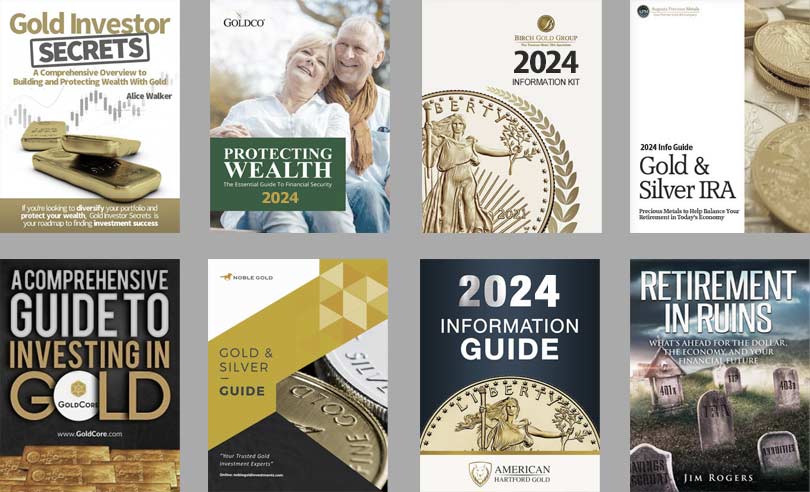Mark in the UK asks the best ways to determine the authenticity of a precious metals investment.
 Bullion.Directory’s Ask Ally Service
Bullion.Directory’s Ask Ally Service
By Alison Macdonald
Commercial Editor at Bullion.Directory
There are a lot of fake bullion bars and coins out there and they are becoming increasingly hard to spot as the price of precious metals reach new all-time highs and criminals up their games to keep the profits flowing.
Determining the authenticity of gold or silver involves a combination of common sense approaches and testing methods.
Whilst doing all of the below may seem like overkill, you can never be too safe…
1. Buying from Reputable Dealers
This is your best bet. Reputable dealers have a reputation and a business to protect.
They ensure what they’re selling is legitimate, often providing certificates of authenticity. If you’re new to buying gold or silver, stick to well-known names. Do some research, read reviews, and maybe even check out industry awards.
Bullion.Directory was created to make this process easier and we currently list over 1600 gold dealers alongside genuine customer ratings and reviews.
Remember, a trusted dealer is like a good friend – they won’t lead you astray.
2. Skepticism with Pricing
If it’s a bargain, be wary. If its below spot run away.
The precious metals market is fairly consistent in it’s pricing – and bullion is always sold at a premium over spot.
Cheap prices can simply be a way for bullion dealers to get new customers, but these special deals are usually limited to one bar, or a few coins.
Wildly cheap prices on the other hand are typically a sign of counterfeit products, or in some cases stolen goods.
It’s like finding a luxury car being sold at the price of a 20 year old beater – something’s not right.
Always compare prices across multiple trusted sources. If the price you’re buying at is within a few percent of the average, all should be well (if you follow the other advice on this page) but if it’s 10% or 20% lower, you are most likely being scammed.
3. Visual Inspection and Hallmarks
Gold and silver items must carry hallmarks or other industry marks indicating their purity.
When it comes to jewelry, these marks include stamps like “925” for sterling silver or “18K” for 75% gold. Gold bullion is typically stamped with the purity written as a fineness, or percentage of gold content – with 99.9% being the same as .999 fine and 99.99% equaling .9999 fine – both referring to 24k gold, or pure gold.
But don’t take these at face value – counterfeiters can be crafty. Inspect the craftsmanship too; genuine gold and silver items have a high-quality finish, minting is typically precise, edges are fine and design detail is crisp.In fraudulent prices these details tend to be of a lower standard.
4. The Magnet Test
Here’s a simple test you can do at home. Gold and silver are not magnetic.
If a magnet pulls at your item, it’s likely got a ferrous metal base (although just because it’s not magnetic doesn’t guarantee it’s real – some non-magnetic metals can masquerade as gold or silver)
Now there IS a test in which silver will slowed by a strong magnet, and this is when a silver item is held on a 45 degree low-friction slope. Because silver is ‘diamagnetic‘ it creates a weak magnetic field in opposition to any external magnetic force – and this will slow pure silver down enough to be noticeable if a strong magnet was not applied.
5. Density Test
This is a bit more scientific. You can measure the density of your item and compare it to the known densities of gold and silver.
This requires accurate scales and some calculations, or a precise way to calculate the displacement of water in relation to it’s supposed weight (I did say it was scientific)
If the density doesn’t match up, you are in all probability dealing with a fake.
6. Sound Test
Gold and silver have a unique ‘ping’ sound when struck.
This requires a bit of experience to recognize, but once you know it, it’s a quick way to spot fakes.
If you have some proven gold or silver coins or bars that you don’t mind hitting with another hard item, hit them with another hard item… You should hear a very clear and extended ring with precious metals that you will not experience with base metals.
Of course, there’s an app for this – in fact there are several apps – and these claim to be able to differentiate between precious metals ring tests and non precious metals.
7. Nitric Acid Test
This should be your last resort due to it’s destructive nature – but you can buy an acid test kit as a means of testing metals purity (or otherwise)
Depending on the kit used, the provided acid reacts differently to non-gold and non-silver metals, and can display different colors for different purity levels.
However, it IS a destructive test and will damage your item in the area tested, so it’s not recommended for pieces you want to keep in pristine condition.
8. Professional Appraisal
When in doubt, turn to the pros. A professional appraisal is a surefire way to determine if your gold or silver is real.
This is especially recommended for larger investments or inherited pieces where authenticity is uncertain.
Experts will have access to a wide range of professional testing methods including advanced testing devises such as XRF (X-ray fluorescence analysis) machines which can categorically show exact metal purities, plating or clad items and more.
9. Electronic Gold Testers
These nifty gadgets are a non-destructive way to test gold and come in a wide range of prices and accuracies, with amateur devices in the $50+ range and pro kits costing 5-figures.
They typically measure the metal’s conductivity and give you a readout of its purity. It’s a more modern approach and great for frequent testing.
XRF devices are the most accurate and costly, but they are incredibly accurate. XRF machines can be hand-held or desktop.
10. Weight and Size Test
Gold and silver coins and bars are produced with very precise specifications and minute tolerances.
Accurate scales and a measuring device such as a vernier caliper are an excellent and quick way to tell if a bullion coin is real.
If the weight and size of your items are off, even slightly, it could be a sign of a counterfeit.
Verifying the authenticity of gold and silver involves a combination of techniques, common sense, and sometimes professional help. Trust your instincts, do your research, and when a deal seems too good to be true, it probably is. Remember, in the world of gold and silver, knowledge is as valuable as the metals themselves.
Alison Macdonald

Ask Ally, is your direct line to gold investment wisdom. Alison “Ally” Macdonald, with her extensive experience and sharp tongue, cuts through clutter to offer honest, insider takes on your gold investment questions.
Need insights or industry secrets? Ally’s ready to deliver, combining professional expertise with a smattering of Glasgow patter. Get ready for straightforward, expert guidance from a one-time gold shill turned good guy. Ask Ally Today










 Material provided on the Bullion.Directory website is strictly for informational purposes only. The content is developed from sources believed to be providing accurate information. No information on this website is intended as investment, tax or legal advice and must not be relied upon as such. Please consult legal or tax professionals for specific information regarding your individual situation. Precious metals carry risk and investors requiring advice should always consult a properly qualified advisor. Bullion.Directory, it's staff or affiliates do not accept any liability for loss, damages, or loss of profit resulting from readers investment decisions.
Material provided on the Bullion.Directory website is strictly for informational purposes only. The content is developed from sources believed to be providing accurate information. No information on this website is intended as investment, tax or legal advice and must not be relied upon as such. Please consult legal or tax professionals for specific information regarding your individual situation. Precious metals carry risk and investors requiring advice should always consult a properly qualified advisor. Bullion.Directory, it's staff or affiliates do not accept any liability for loss, damages, or loss of profit resulting from readers investment decisions.

Ha ha I just looked up the price of an XRF test kit.
Definitely not one for the average home investor!
Ally